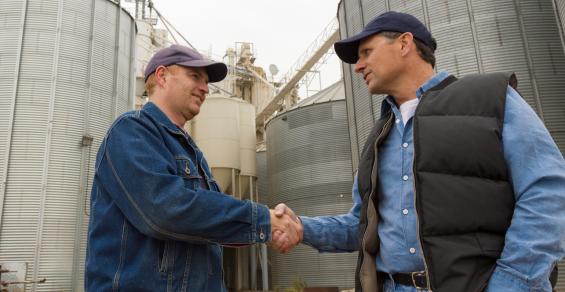Training session covered how to advocate for dairy, beef and hog production.
Editor’s note: This is the second article in a two-part series on how to advocate for livestock development in North Dakota.
During its annual fall pig event, the North Dakota Livestock Alliance hosted a training session on how to be a spokesperson for livestock development. Attendees learned to advocate and educate on behalf of livestock growth in the state.
In addition to an overview on how to address community concerns regarding livestock development, speakers shared how to advocate for various types of livestock:
Dairy. Amber Boeshans, executive director of the North Dakota Livestock Alliance, spoke on dairy advocacy points, including why dairy cattle are housed in barns.
Related: Learn how to advocate for livestock
“Who wants to try to guess the breakeven air temperature for cattle? The temperature the air should be for her body to not need energy to warm up or cool down?” Boeshans asked. “It’s 60 degrees [F]. That can be a lot of work to keep cattle at a comfortable temperature, and barns aid in that.”
Dairy farms often hear concerns about how the cows are being milked, as well as other animal welfare questions. “We want to share about the milking process and a day in the life of a dairy cow without going too in-depth and overwhelming the audience,” Boeshans says. “We have less than 15,000 dairy cows left in North Dakota. So a huge part of our discussions are figuring out how to get new dairies to open and how to help existing dairy farmers to expand and thrive.”
Beef. Sharing the talking points for beef was Gerald Stokka, associate professor in veterinarian livestock stewardship at North Dakota State University Extension.
“One of the hottest topics with today’s beef consumers is climate change,” Stokka said, adding that the environmental benefits cattle give needs to be part of the conversation. “We want to remind people that cattle grazing and plants taking up carbon dioxide is a natural cycle that is a very positive thing for the environment.”
Stokka also discussed how large-scale feedlots remain dedicated to animal health. “Feedlots do a great job caring for animals simply because they have caring, specialized workers designated for these chores,” he said.
A final discussion point from Stokka revolved around antibiotic usage in beef cattle. “Many of our common antibiotics have changed from over the counter to by prescription only,” he said. “I think that’s OK, because it has led to an even closer relationship between the producers and their veterinarians, and has expanded transparency with consumers.”
Hogs. The final piece to the livestock development training was advocating for hog operations. Tamra Heins, executive director of the North Dakota Pork Board, stated the main concerns she encounters from community members.
“The biggest concern people have are the air and water quality issues that might come up, and I think those are valid questions that should be asked and answered,” Heins said. “I think a lot of people are maybe also scared of the unknown if they see those big closed-off barns, as they’re not sure what’s going on in there.”
Hog barns are closed off for biosecurity purposes and animal safety; however, some community members may perceive it as “secrecy,” Heins noted. “We have virtual tours and resources available, but this is a great opportunity to share with people about biosecurity and [have an] open discussion about what occurs in these barns,” she said.
The best benefits for a new hog operation? “We have local businesses who get to service these barns,” she said, including electricians, electric cooperatives, human resources, office jobs and the day-to-day management with pigs. “A hog barn can bring 19 to 20 jobs, which is a big impact to a small community.”
To learn more about benefits of livestock development and the work of the North Dakota Livestock Alliance, visit ndlivestock.org.





